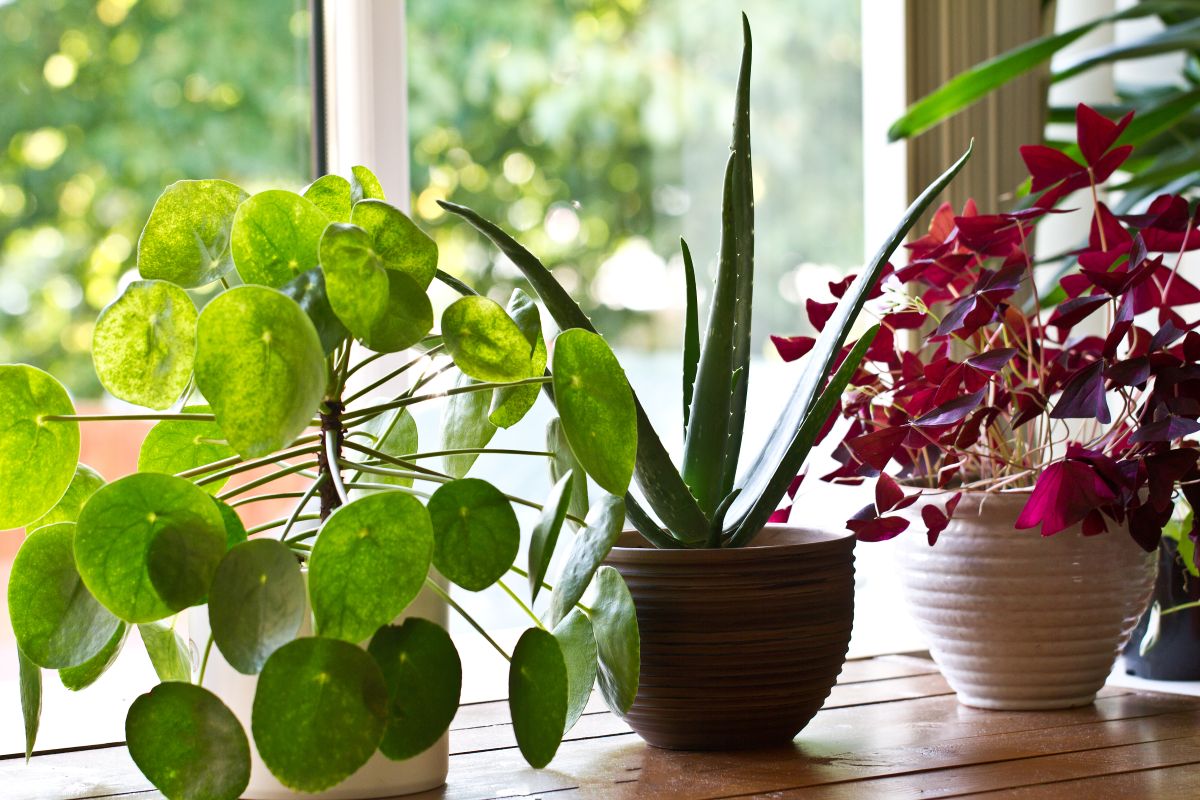Growing your indoor jungle

Nothing makes a dorm room or apartment feel more like home than a trailing philodendron or a unique succulent on the windowsill. Not only do houseplants bring a bit of the outdoors in, but caring for your plant collection can offer a mindful moment in a hectic week. But not everyone is born with a green thumb. Read on to learn how to avoid common mistakes and keep your indoor jungle thriving!
Know your space
Step one is taking a good look at your space. Do you live in a converted closet with no natural light? If you have a window, what direction does it face? Is there an available windowsill or ceiling plant hook directly in front of that window, or will you have to place your plant off to the side or towards the center of the room?
Knowing your natural light is key, but all light conditions can work, given the right choice of plants and the proper tools. Here’s a quick cheat-sheet:
- South-facing windows with no major obstructions (think a large overhanging eave or tree overhead) are ideal for many plants.
- West-facing windows are great for plants that can handle intense afternoon sun. If your plants are a little more sensitive, place them a foot or so away from these windows.
- East-facing windows are a step down from south-facing in the “ideal” category. Many houseplants will do okay here.
- North-facing windows offer the least natural light. Choose medium- or low-light-tolerant plants for these windows.
- No natural light or no space directly in front of a window? Normal overhead lights may be enough for low-light-tolerant plants, but grow lights can allow you to grow anything anywhere! Look for “full spectrum” LED lights with a built-in timer switch for convenience.
Take home the right plant
Now that you know your space, it’s time to shop! We are fortunate in Champaign-Urbana to have great plant shopping options. When you get to the shop, you may be tempted by a pink-variegated philodendron, a fiddle-leaf fig, or a spiky barrel cactus. But try to keep your home lighting conditions in mind when picking out your plants (or be prepared to invest in supplemental lighting if your space doesn’t offer what your dream plant needs). Most plant tags call for “bright indirect light,” which can be hard to interpret. Generally, these are not low-light-tolerant plants, but they could do well in a south, east, or west window.
Common categories:
- Very bright light (south or west windows) — choose succulents/cacti and plants with waxy, succulent leaves (e.g., Hoyas).
- Bright to medium light (east or north windows) — many plants do well in this category. Choose leafy trailing or climbing plants (pothos, phildendrons, Monsteras), spider plants, rubber plants, begonias, and peperomias.
- Medium to low light (north windows or dark corners) — choose snake plants, ZZ plants, and cast iron plants.
- Trickier plants to avoid: Many beginner plant parents have trouble with palms, ferns, fiddle leaf figs, and Calatheas. They may be beautiful and tempting, but set yourself up for success with one of the types listed above.
You’ll also want to consider your furry friends when choosing a plant to take home. The ASPCA maintains a list of pet-safe plants.
Make plant friends
Plant people are the best people. Finding a fellow plant enthusiast means you can go plant shopping together, share cuttings and advice, and geek out with someone who gets it when your favorite plant is pushing out a new leaf.
On campus, get involved in the U. of I. Horticulture Club, advised by crop sciences professors Andrea Faber-Taylor and Jack McCoy. The club offers hands-on educational events all year for beginners and advanced plant parents alike. Their biggest moment happens during Moms Weekend, when they host a huge plant sale.
Community group CU Plant People is another way to share your plant enthusiasm. They’re hosting a fall mixer and plant swap on Sept. 27 from 10-12 in Urbana’s Crystal Lake Park. It’s a great way to meet fellow plant enthusiasts and pick up new plants and cuttings. Come close to noon to help clean up and claim the extras, if you’re just starting your plant collection.
The Illinois Orchid Society and the Bonsai Society of Central Illinois are active community groups for specialty growers.
In the meantime, follow the Voices of ACES Blog for another installment on basic plant care and propagation.
Happy planting!